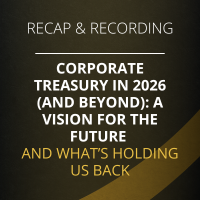Currency markets are unpredictable and can be highly volatile. Exchange rates are driven by an enormous array of factors and, companies dealing internationally face financial losses and business disruption if currency fluctuations aren’t avoided.
Source: Oku Markets
One of the biggest risks to a business failing to effectively reduce its currency risk is the dangerous injection of a decision-maker’s market view into the firm’s currency strategy. Without a clear plan in place, a company is exposed to emotional decision-making, markets-based decisions, and the potential to become over- or under-hedged as a result of these bad decisions.
This is where an FX Policy comes in…
What is an FX Policy?
An FX Policy is a formal document that outlines the processes, procedures, and guidelines for how a company manages its currency risk management strategy and trading operations.
The Policy document itself needn’t be a long, ultra-sophisticated, and complex manual; it can easily be one-or-two pages that outline the who, what, when, why, and how of your business’ currency processes.
What goes into an FX Policy?
As a bare minimum, we suggest the following items for every Policy:
- Risk Quantification – how are you quantifying your FX risk?
- Risk Mitigation – what’s your strategy for reducing your FX risk?
- Risk Reporting – how and how often will you report on your progress?
- Approvals – for personnel, counterparties, financial instruments, limits etc.
One of the key advantages of working with a Policy is that it brings process and a clear mandate of what to do when and how to do it. Companies operating with an FX Policy benefit from shared accountability and are less exposed to the bad decisions of one individual.
Harry Mills, CEO Oku Markets
What else could the Policy include?
If you wanted to take things a stage further, you might consider the below:
- Definitions – for terms within the document
- Scope and Objectives – what are you trying to achieve?
- Identified Risks – all sources of currency risk within the organisation
- Risk and exposure limits – trading limits and counterparty exposures
- Controls and monitoring – controls/metrics for monitoring risk levels
- Accounting procedures – treatment of derivatives for accounting

Why you need a Policy
There are some obvious benefits from operating a Policy, with the financial and business performance aspects chiefly in relation to the Strategy you adopt:
- Earnings protected from currency fluctuations
- Profit margins protected from currency volatility
- Cash flow stability and predictability
- Improved budgeting and forecasting
But there are other, non-financial benefits that you should be aware of:
- Builds investor confidence
- Demonstrates strong governance
- May provide a competitive advantage
- Eliminates key-person risk/reliance on one person
- Reduced risk of poor/emotional decision-making
If you are the financial decision-maker in your business, then you will benefit by sharing accountability and gaining Board sign-off on a formal FX Policy. FDs and CFOs often face internal pressure from other stakeholders who may have a market view. Additionally, FX brokers will push for trades that might not be in the best interests of the business so, working to a Policy will give strict parameters for trading that will avoid these risks.
Would you like help building your own FX Policy?
Want to learn more? treasuryXL expert Harry Mills can guide you with risk quantification, strategy testing and design, policy creation and implementation, and ongoing reporting and performance evaluations.
Thanks for reading!
Harry Mills, Founder at Oku Markets












